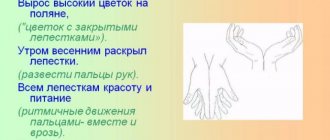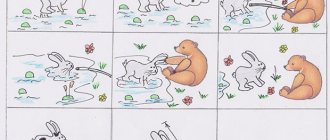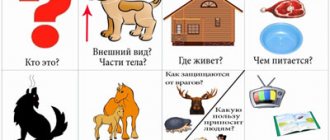What is the best mnemonic technique?
Mnemonics techniques do not work the same for all people. Every child and adult is unique. It seems to one that some technique is directly necessary, while to another the same technique is seen as a useless exercise.
Therefore, when offering a child, you need to select a specific technique for specific memorization. What should it be like?
Check the selected technique for the following principles:
- it must attract the child's attention,
- contain a simple association,
- this association is easy to remember,
- attracts attention.
The dumber, funnier, more absurd, more enjoyable the mnemonics are, the better. Don't use boring and old ones. In addition, they must correspond to what needs to be remembered.
This can be explained with an example. The example is taken from the Internet.
The child needs to remember that off the coast of Ecuador on the Galapagos Islands there is a huge number of unique animals, including dragon water lizards.
What method should I use to memorize?
- Ecuador has a flag and you can use it. But it will not attract attention and does not give an association with animals.
- You can imagine a dragon lizard crawling onto the island. But we need to remember the name of the island and many more unique animals.
- Dragon lizards galloping across the island. Gallop is consonant with the word Galapagos. We still need a lot of unique animals. One can imagine a herd of animals released from the reserve and galloping across the island. They are led by dragon lizards.
The third method is the most memorable and corresponds to what needs to be remembered. We choose him.
In general, the effect of using mnemonics is similar to solving complex riddles with a strange “answer”. Check it out for yourself here (link will open in a new tab).
Below are the mnemonics I liked.
Mnemonics according to the rules of the Russian language.
Which is correct? Stockings or stockings? Socks or sock? But if you remember: the longer, the shorter. Then you will always say correctly: stockings, socks .
And here's another one. How to pronounce it correctly: apples or apples?
You can learn about the secrets of correctly remembering any information for a long time (laws, etc.) here (link will open in a new tab).
Methods for diagnosing the memory of preschoolers
Diagnosing memory in preschoolers using techniques is necessary to identify the effectiveness and adequacy of the training provided and to improve further educational techniques. After diagnosis, the development plan and the children’s learning model are adjusted.
Important! Diagnosing the memorization process in children at an early age will help to avoid possible violations in this process and take the necessary measures in time.
Memory techniques for preschoolers:
- Mastering the material
- Playback,
- Quality of information storage.
Visual, auditory and motor memory work during the diagnostic process.
Effective memorization techniques
Memorizing is building a long-term imaginary connection with something: a date with an event, information with a program or a certain course. Psychologists call such processes “associative connections.”
Memorizing numbers using mnemonics
Important! It happens that a person begins to reproduce the material poorly. This process is characterized by frequent memory lapses and forgetting. Similar phenomena can occur in people of different ages. Don't worry about this right away. As a rule, this usually happens due to the fact that the brain filters out unnecessary information. There is a “cleansing” of knowledge that has not been used for many years. Such moments are very individual and depend on the structure of the brain. It should also be remembered that a child’s body is different from an adult’s and is formed until adolescence.
Currently, there are many effective memorization techniques. They are used by authors to create their books, many of which can be found in audiobook format and listened to online or downloaded. Also today there are proprietary courses on memorization techniques taught by professional psychologists and specialists.
The most common methods:
- Multisensory reception. Impacts on receptors during the process of memorization.
- Mnemonics. It is used in speech therapy and pedagogical practices when working with children from 3 years old and in the preschool period when studying poems, stories and other information.
- Associative practice. Helps immerse the brain in a labyrinth of logical chains, learn to connect an object with the desired event.
- Sorting of material. It is suitable for those who like to develop memory by classifying material into topics and blocks.
- "Buffet". Memorizing information in a row, without breaking it down into subtopics.
- Dropping words. This involves writing out material manually and discarding unnecessary text.
- Rhyme and numbers. Rhyme is used when remembering rules, and numbers are used when learning numbers (for example, 0 is a donut, 2 is a swan).
Mnemonics and mnemonics
Mnemonics are used for the following:
- Facilitate memorization and increase memory capacity;
- Development of cognitive activity;
- Development of the main mental processes, as well as auditory and visual memory;
- Improves thinking skills, imagination, coherent speech and fine motor skills.
Mnemonic table for dishes
Using mnemonics, the following processes are facilitated:
- Enrichment of vocabulary;
- Writing stories;
- Guessing riddles;
- Memorizing poems.
Self-education topics for educators
Rules for children memorizing information
7 main rules:
- First, arouse the baby’s interest and intrigue.
- Create associations. The better it is, the better the information will be perceived.
- Remember in parts. Under no circumstances should you require your child to know the text by heart in one sitting.
- Repeat what you memorized.
- Trying to understand the material means creating logical chains in thinking.
- Setting a goal to “remember.”
- Apply knowledge of this information in practice. For example, when memorizing a poem by heart, tell it to parents, teachers and the group more often.
Mnemonics for beginners: exercises for children, games
Exercises for beginners on mnemonics for children are always exciting and interesting. These can be mnemonic tables, mnemonic techniques, exercises.
DIY mnemonic table
Note! The principle of mnemonics is the creation of visual, auditory and sensory representations.
Exercises:
- Consonances. Thanks to constant repetition, the word is remembered: “Like there is snow on the hill, snow, and under the hill there is snow, snow. And there's a bear sleeping on the hill! Quiet, quiet, don’t make any noise!”
- Tables. Help the baby build coherent speech. With their help, they study fairy tales, seasons, and poems.
- Rhymes. Rhymes are selected for words that are difficult to remember: grass-owl, rumor, where.
- Scheme. To remember numbers. For example, an association word is written for each number: 4 - chair or armchair.
What mnemonics are the best and suitable for children in grades 1-4?
A small child under 3 years old has a sponge's memory.
Absorbs everything. Then she becomes selective, subject to interest. By age 7, memory is formed, but it is still involuntary. And to study in primary school, a child needs help, the so-called mnemonics for children in grades 1 - 4. After all, you need to quickly and a lot memorize, learn poems, rules, and master the program. And not only the program. Almost all children go to additional clubs, where memory is simply necessary.
And then more. The volume of material being studied is increasing and something urgently needs to be done with memorization skills. And it is better for parents to immediately help their child learn to effectively memorize information using various special means.
In addition, using mnemonics, we “kill” several birds with one stone. We remember quickly, fun and a lot, retain information for a long time, develop memory and completely control the memorization process.
And most importantly, we train attention and thinking. These are the tools I want to share with you.
The content of the article:
Mnemonics in simple words
The simplest mnemonic techniques for children in grades 1-4
- The easiest way is rhyme and rhythm
- Where will the regroupings lead?
- These scary sequential associations
- Scribbles?
- Let's play with sound?
- Is this seat taken?
- How to learn poems dynamically?
- Where should I hang the word?
- We encrypt information
What is the best mnemonic technique?





